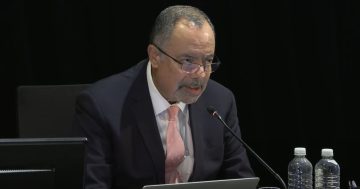
The RAAF’s latest ‘Where Your Potential Lives’ campaign was introduced in early 2024. Image: ADF.
The Australian National Audit Office (ANAO) has found that, while Defence’s management of its recruitment advertising campaigns is largely effective, the department has failed to conduct evaluations to determine campaigns’ effectiveness.
In a report published on 24 June, the ANAO studied three recent Defence recruitment campaigns from the 2022-23 period. It said that, during that period, the three campaigns accounted for nearly 34 per cent of all Federal Government advertising.
It says Defence complied with most of the requirements of the campaign advertising framework, and largely complied with the requirements of four of the five main principles of the relevant Australian Government Guidelines on Information and Advertising Campaigns for the three campaigns.
Defence advertising must comply with the five ‘overarching principles’ of the guidelines.
For the selected campaigns, Defence largely complied with the review, certification and publication requirements of the Australian Government’s campaign advertising framework and complied with the requirements of principles one to three of the guidelines.
It says while Defence largely complied with principle four, it could not provide the ANAO with supporting evidence to verify the accuracy of cost information for each campaign.
For principle five, it says Defence did not clearly document the substantive basis for its advice that there were no legal concerns with respect to the campaign materials.
“Australian Defence Force (ADF) recruitment advertising campaigns are typically the largest conducted by Australian Government entities each year,” it said.
“The Department of Finance reported that the Department of Defence’s recruitment advertising expenditure was $60.2 million for 2022–23, representing approximately 33.6 per cent of total Australian Government advertising expenditure of $179.3 million.
“In meeting its outcomes, Defence has identified ‘investing in the growth and retention of a highly skilled workforce to meet Australia’s defence and national security requirements’ as one of its seven key activities,” it says.
As a result of its audit, the ANAO has recommended that Defence include a statement in its annual report on the specific advertising campaigns it conducts, and that it provides Finance with details of expenditure on individual advertising campaigns for inclusion in Finance’s annual report on campaign advertising.
It also recommends that clear objectives for each campaign are established prior to the development of a campaign, that an evaluation plan is documented, and that a final evaluation report is submitted at the end of a campaign.

The ADF only achieved 73 per cent of its recruitment targets in 2022-23. Photo: ADF.
In its response, Defence agreed with all the recommendations, noting that, “each of its campaigns are subject to rigorous and comprehensive quarterly evaluations over the life of a campaign, a period of typically four to six years, to regularly assess the audience’s resonance with, recollection of, and reaction to, the subject campaign”.
“Defence agrees with the recommendations regarding the improvements to transparency in formal reporting,” the Department said.
“While Defence has reported expenditure connected to all of its advertising campaigns in annual reports authored by the Department of Defence and the Department of Finance, Defence has not provided details relating to expenditure by campaign, an action it will undertake in formal reporting in the future.”
The report comes at a pressing time for Defence which, while it says it needs to grow its uniformed numbers by a third by 2040, is failing to meet its current recruitment and retention targets.
A recent report by the Australian Strategic Policy Institute (ASPI) says, “the ADF is haemorrhaging skilled people to the civilian sector”, and that, “It must rebrand itself as a modern, technologically advanced organisation that offers challenging and rewarding careers and use targeted recruitment to get the tech skills that it needs”.
“While the 2016 Defence White Paper acknowledged the need for technological adaptation, the ADF’s response has been sluggish and insufficient,” it says.
It says a 2021 report by the Defence Science and Technology (DST) Organisation has identified critical shortages in personnel with qualifications in science, technology, engineering and mathematics (STEM), particularly in cybersecurity and software engineering.
“That lack of expertise hampers the ADF’s ability to leverage emerging technologies and leaves it vulnerable to sophisticated cyberattacks.”
While Defence has tried to stem the flow of people leaving the services through initiatives such as retention bonuses and better housing solutions, it is still falling short, with just 73 per cent of its recruitment target met in 2022-23.
Defence sources have also expressed frustration in recent weeks with the performance of the Department’s new recruitment partner Adecco Australia, which is reportedly failing to meet its recruitment processing targets. Adecco was unveiled as the new partner in July 2023 after taking over from incumbent Manpower, while the former ‘Defence Jobs’ branding was rebranded as ‘ADF Careers’.











